
Credit & Copyright: Rick Scott and Joe Orman

| Optically, we see a fairly bland surface, broken up by sunspots (and in this case, Mercury!) | 
Credit & Copyright: Rick Scott and Joe Orman |
| What do we mean by taking the sun using the light of various atoms? This is what the solar spectrum looks like: dark lines correspond to various specific elements, and they have precsiely known wavelengths. | 
|
| SO (e.g.) we can pick out Hydrogen (H), which picks up the prominences very clearly |  Credit & Copyright: Ralph Encarnacion |
| A prominence erupts from the surface of the sun: note there is very little material actually in these | 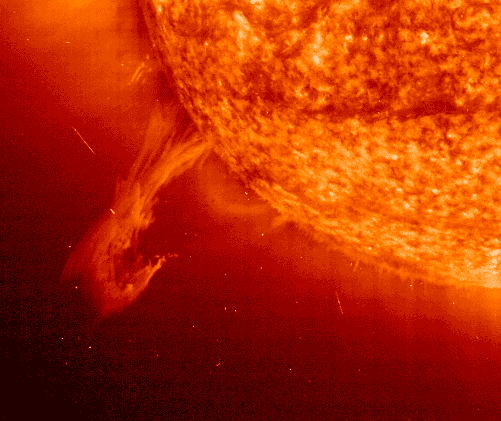 |
| This is helium light: a "rosti" picture. Note the sunspots |  |
| This is in X-rays: note the hot X-rays come from the cool sunspots! |  |
| and this looks at the mag field: Dark is a N pole, light is a S pole |  |
| And this looks at the sun at 3 different temperatures: Red at 2 million, green at 1.5 million, and blue at 1 million degrees C. |  Credit: SOHO - EIT Consortium, ESA, NASA |
No surface in any normal sense,
|
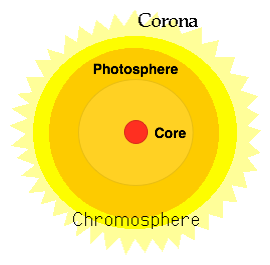 |
| Dark areas (umbra) surrounded by less dark (penumbra). Dark is relative: temperature in umbra ∼ 3800 K |
 Copyright: AURA/ NOAO |
Strong magnetic fields: typical solar mag field ∼ .01 T = 100 gauss In sunspot, can be ∼ .4 T ∼ 4000 gauss (say about 1/4 that in MRI machine) |
 |
| Can take magnetogram: look at sun in three (or more) nearby wavelengths. By subtracting these, can get "magnetic field" picture of the sun. | 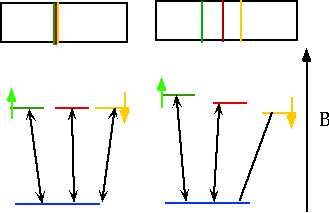 |
| Can get "magnetic field" picture of the sun. Usually in pairs (or larger groups) with opposite magnetic polarity. |
 |
Show irregular 2 × 11 year cycle:
|
 |
| Cycle is irregular, sometimes very few spots. Maunder minimum (long period of very few spots) coincided with "little ice age" in Europe (1550-1700) |
 |
| Granulation of solar surface: Hi-res pictures of sun (usually in H line) show "granules" of about 700 km radius surrounded by darker (i.e. cooler) "lanes" Lifetime ≈ few minutes. |  |
| Prominences look very dramatic, but are actually quite benign: this shows a prominence erupting on the sun |  |
| This shows a huge "prominence" erupting from the sun's surface | 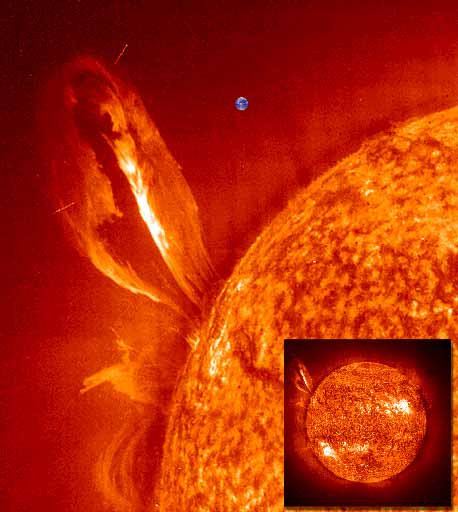
Credit: Canadain Space Agency |
| Hard to see corona from earth, but magnetic field concentrates matter. Coronal loop is about 50000 km high |  TRACE |
| The corona changes according to the stage of the sunspot cycle: this is at a minimum | 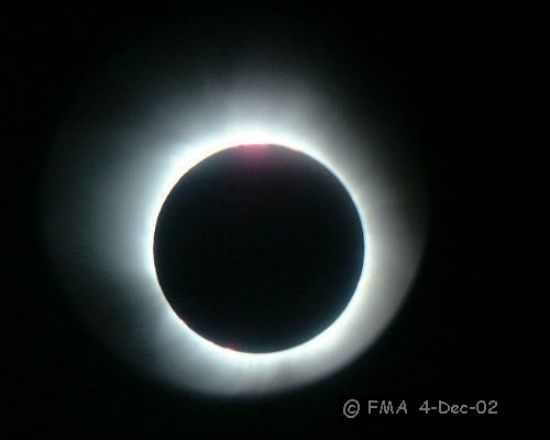 |
| and this is close to a maximum: note the huge streamers of particles blowing out |  Image Credit: High Altitude Observatory, NCAR |
| and this is a "hole" in the corona |  |
| This is a normal looking aurora | 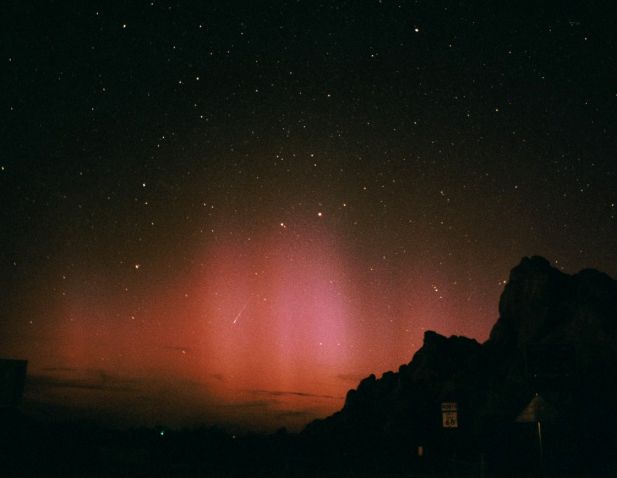 |
| But we can see these from space as well | 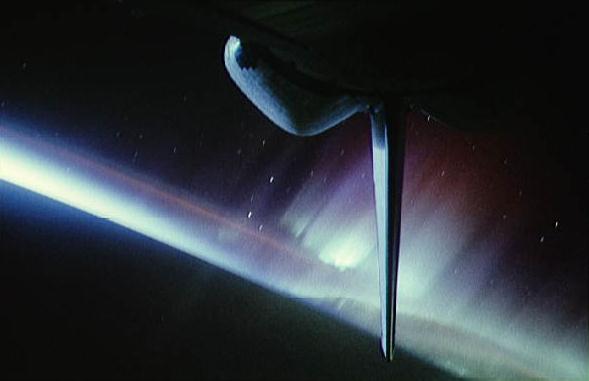 |
| And we will always get N and S auroras | 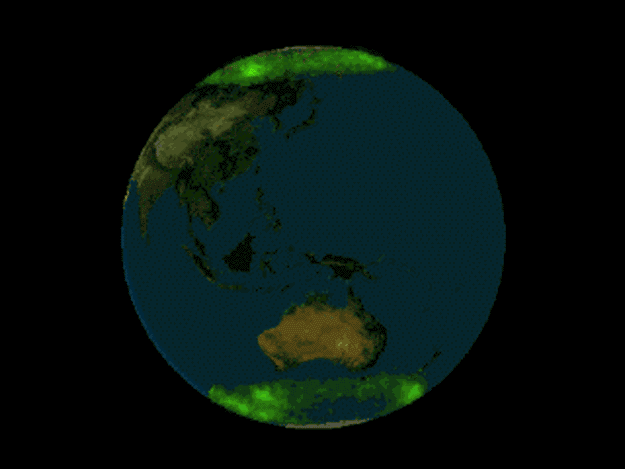 Auroras Over Both Earth Poles Credit: Polar VIS, JPL, NASA |
| This is a tube of magnetic flux on the sun: it confines particles. When it collapses, it squirts out the particles |  |
| which travel through space | 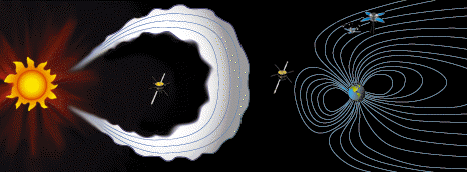 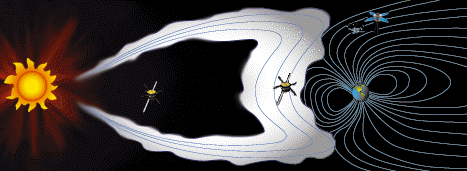 Image credit: Goddard Space Flight Center . |
| and cause a magnetic storm/aurora here on earth | 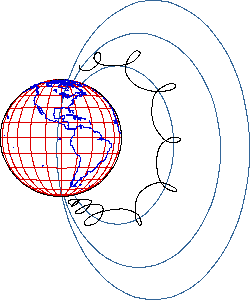 |
| The colours arise because of different interactions in the atmosphere | 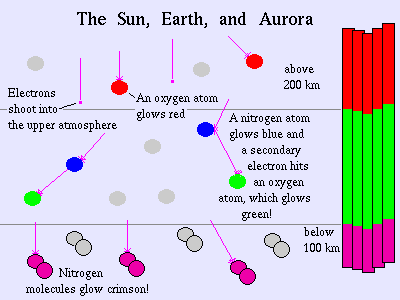
Diagram from University of Alaska Geophysical Institute |
| And while we are about it, Jupiter also has aurora: this is on the night side of the planet as seen from the Galileo space probe |  |
| and Saturn | 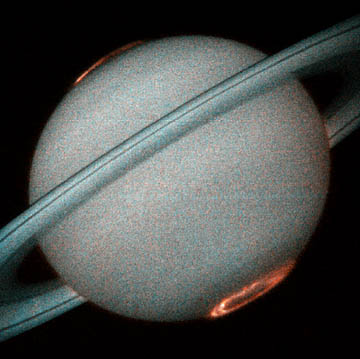
Saturn Aurora Credit: J. Trauger (JPL), NASA |
| How many? 5 SNU implies 1 atom of 37Cl converted/day (a needle in a haystack?). Run for 3 months, search for Ar37 | 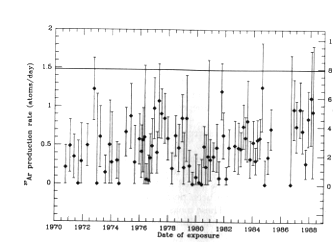 |
Sudbury Neutrino Observatory (SNO) How does this work? . Need to go deep to get away form cosmic rays  |
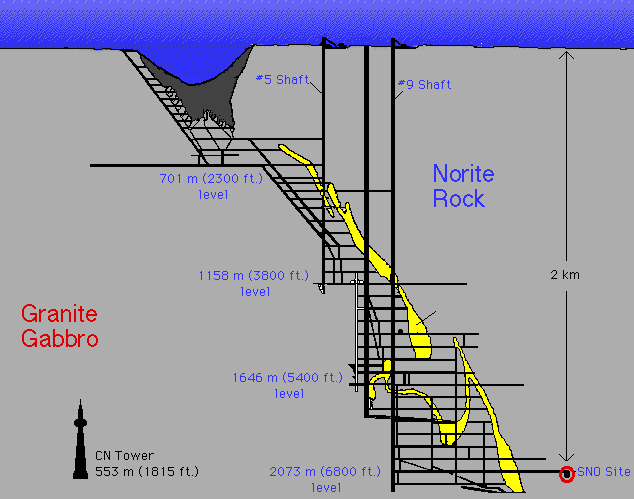 SNO collaboration |
| in the Creighton mine (note the other bit of astronomy: the Sudbury basin is an old meteorite crater!) | 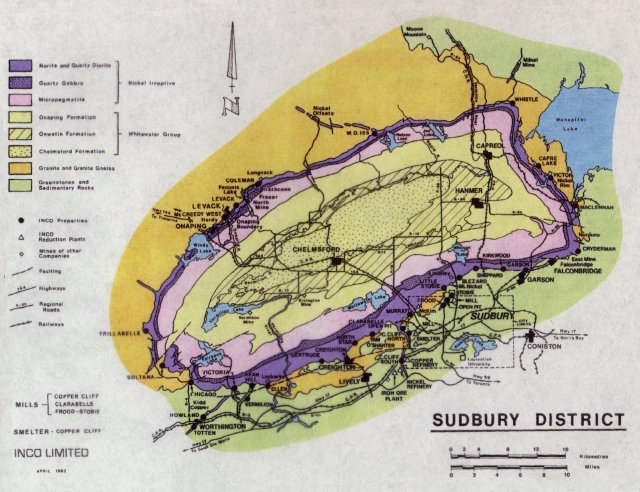 SNO collaboration |
SNO uses 1000 tons of D₂ ν + d ⇒ e- + p + pallows ν's to be seen immediately. |
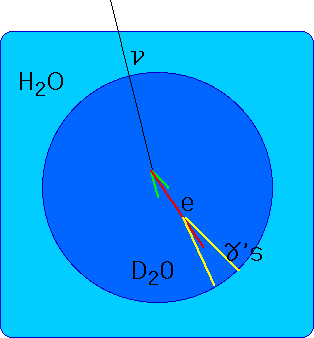
|
| Must be pure (radioactivity gives false positives) < 10-15 parts Radium | 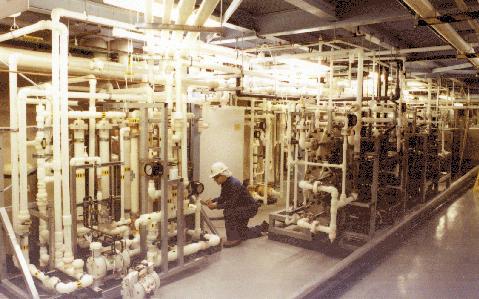 SNO collaboration |
| Light (photons) are picked up by photo-tubes | 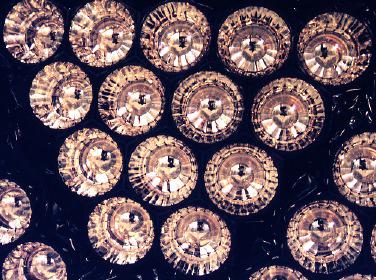 SNO collaboration |
| 10000 look like this | 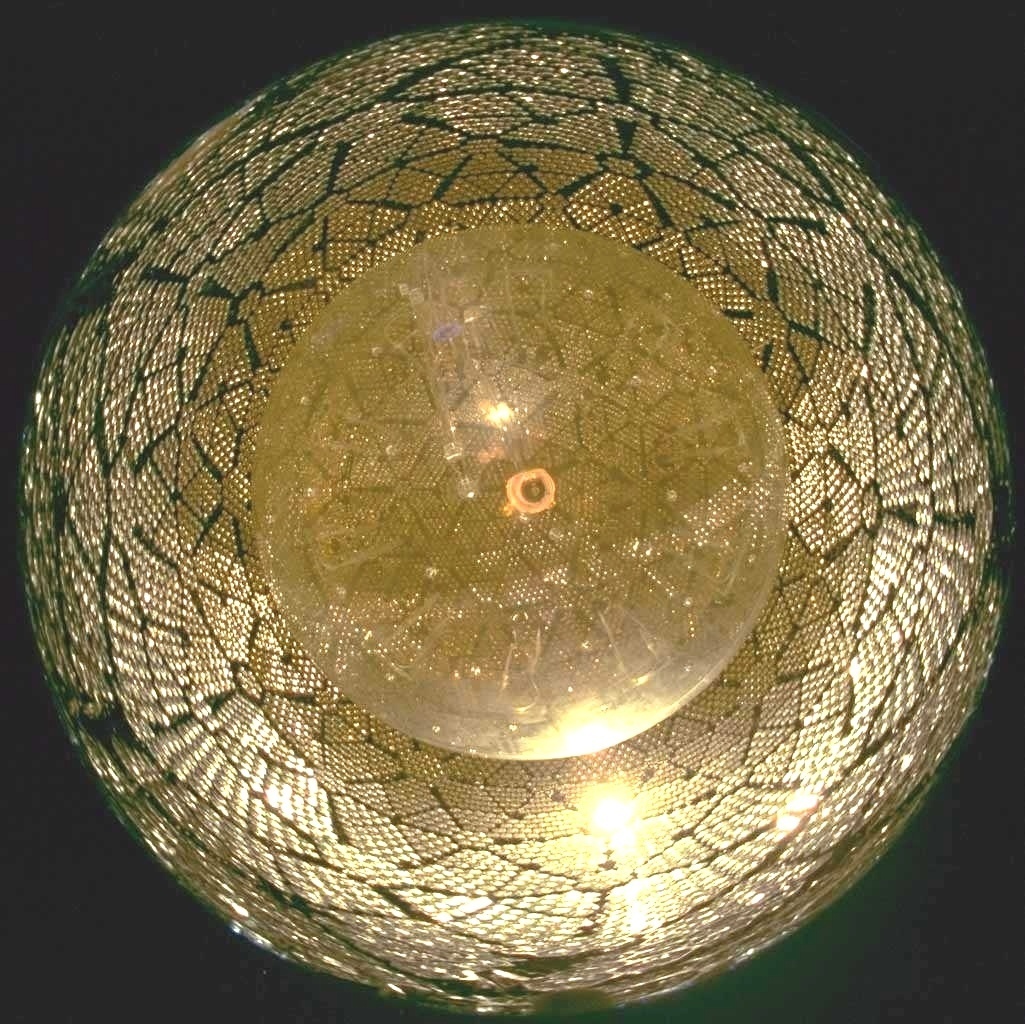 SNO collaboration |
| Produces "rings" of light which allow incident particle to be reconstructed | 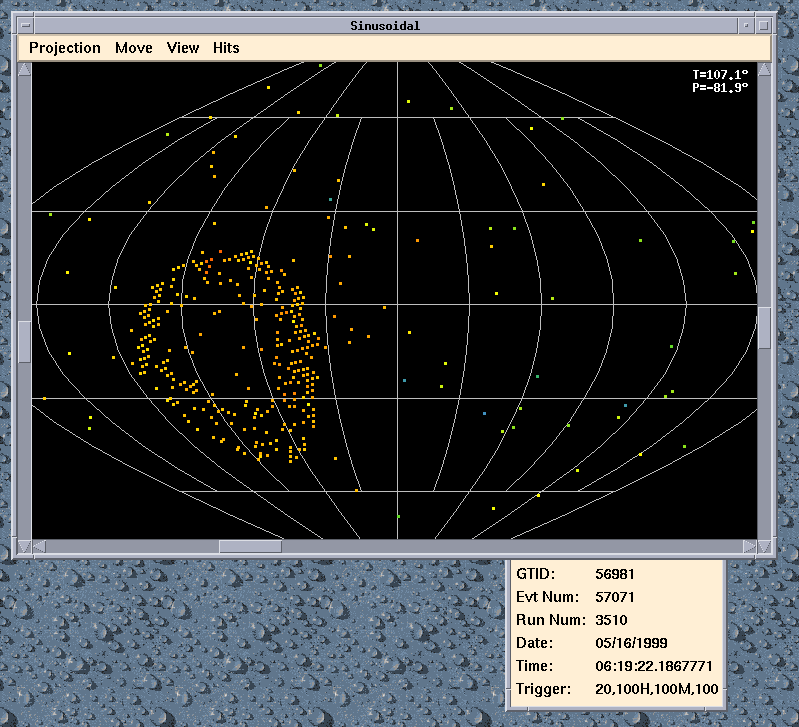 |
Why? We don't know, but it means that ν's have mass.